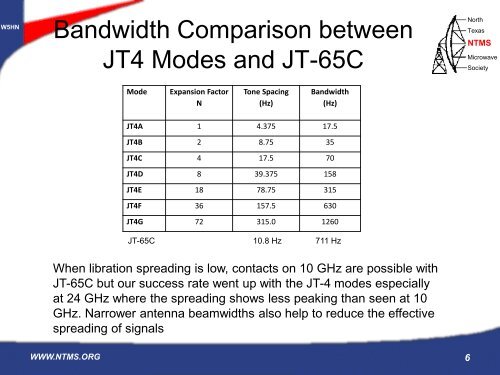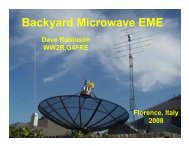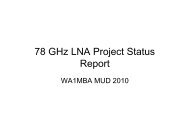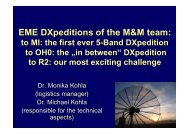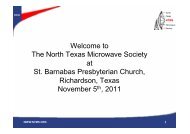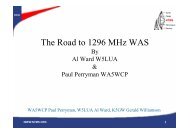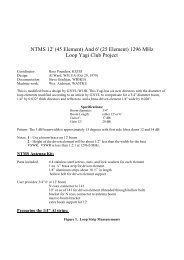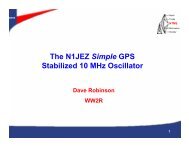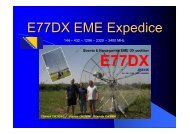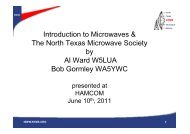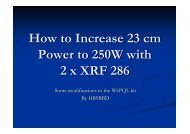You also want an ePaper? Increase the reach of your titles
YUMPU automatically turns print PDFs into web optimized ePapers that Google loves.
W5HN<br />
Bandwidth Comparison between<br />
JT4 Modes and JT-65C<br />
North<br />
Texas<br />
<strong>NTMS</strong><br />
Microwave<br />
Society<br />
Mode<br />
Expansion Factor<br />
N<br />
Tone Spacing<br />
(Hz)<br />
Bandwidth<br />
(Hz)<br />
JT4A 1 4.375 17.5<br />
JT4B 2 8.75 35<br />
JT4C 4 17.5 70<br />
JT4D 8 39.375 158<br />
JT4E 18 78.75 315<br />
JT4F 36 157.5 630<br />
JT4G 72 315.0 1260<br />
JT-65C<br />
<strong>10</strong>.8 Hz<br />
711 Hz<br />
When libration spreading is low, contacts on <strong>10</strong> <strong>GHz</strong> are possible with<br />
JT-65C but our success rate went up with the JT-4 modes especially<br />
at <strong>24</strong> <strong>GHz</strong> where the spreading shows less peaking than seen at <strong>10</strong><br />
<strong>GHz</strong>. Narrower antenna beamwidths also help to reduce the effective<br />
spreading of signals<br />
WWW.<strong>NTMS</strong>.ORG 6


